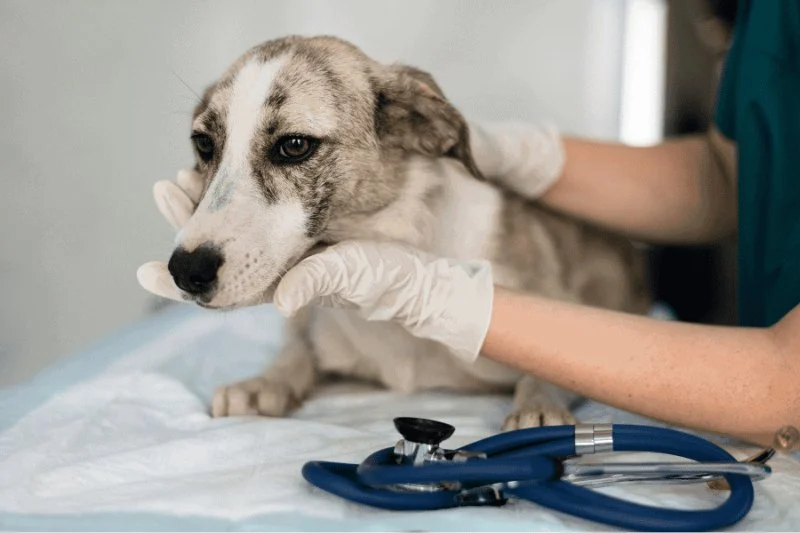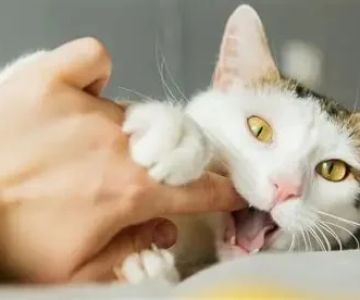
- 1. What is Spaying and Neutering?
- 2. The Benefits of Spaying and Neutering
- 3. The Spaying and Neutering Procedure
- 4. When Should You Spay or Neuter Your Pet?
- 5. Post-Operative Care for Your Pet
- 6. Common Myths About Spaying and Neutering
- 7. Conclusion: Why Spaying and Neutering Matters
1. What is Spaying and Neutering?
Spaying and neutering are common medical procedures for pets, particularly dogs and cats, that help control the pet population and provide health benefits. Spaying refers to the removal of a female pet’s ovaries and uterus, while neutering is typically used for males and involves the removal of the testicles. These procedures prevent unwanted pregnancies, reduce the risk of certain cancers, and may improve behavior in both males and females.

VCA Baybrook Animal Hospital
MilfordSouth Central Connecticut Planning RegionConnecticut
56 Quirk Rd, Milford, CT 06460, USA
2. The Benefits of Spaying and Neutering
Spaying and neutering offer numerous benefits for both pets and their owners. Here are the key reasons why pet owners choose to have their pets spayed or neutered:

Pleasant Plains Animal Hospital North
1317 Forest Ave, Staten Island, NY 10302, USA
2.1 Preventing Overpopulation
The most important reason for spaying and neutering is to help control the pet population. Every year, millions of dogs and cats are surrendered to shelters, many of which are euthanized due to overcrowding. By spaying and neutering your pet, you are contributing to reducing the number of unwanted animals.
2.2 Health Benefits
Spaying and neutering can also offer significant health benefits. For females, spaying eliminates the risk of uterine infections and significantly reduces the risk of breast cancer, especially when done before their first heat cycle. Neutering male pets prevents testicular cancer and may reduce the risk of prostate problems. Both procedures also eliminate the risk of unwanted pregnancies, which can cause physical and emotional stress for pets.
2.3 Behavioral Improvements
Spaying and neutering may lead to improvements in behavior. Neutered males are less likely to roam, mark territory, or exhibit aggressive behavior. Spayed females won’t go into heat, which can reduce behavioral issues such as vocalizing and restlessness.
3. The Spaying and Neutering Procedure
Both spaying and neutering are surgical procedures performed under general anesthesia. Here’s an overview of what to expect:
3.1 Pre-Surgery Preparation
Your veterinarian will provide instructions on how to prepare your pet for the surgery. Typically, pets must fast for at least 12 hours before the procedure. Your vet will also perform a physical exam to ensure your pet is healthy enough for surgery.
3.2 The Surgery
The surgery itself is straightforward. During spaying, the vet will make an incision in the abdomen to remove the ovaries and uterus. For neutering, the procedure involves making a small incision in the scrotum to remove the testicles. Both procedures typically take about 30 minutes to an hour, depending on the pet’s size and health.
3.3 Recovery
After the surgery, your pet will be closely monitored as they wake up from anesthesia. Most pets recover quickly and can go home the same day. It’s important to follow the vet’s post-operative instructions carefully to ensure a smooth recovery.
4. When Should You Spay or Neuter Your Pet?
The ideal age for spaying or neutering depends on your pet’s breed, size, and overall health. Most veterinarians recommend spaying or neutering pets between 6 and 9 months of age, but it can vary. Some veterinarians may recommend the procedure as early as 8 weeks in certain cases. Discuss the best time for your pet with your veterinarian to make an informed decision.
5. Post-Operative Care for Your Pet
Proper aftercare is essential for your pet’s recovery. Here are some general guidelines:
5.1 Limit Activity
After surgery, it’s important to limit your pet’s physical activity for at least 10-14 days. Avoid rough play or jumping, as it may cause the incision site to reopen. Keeping your pet calm and relaxed during this period is crucial for proper healing.
5.2 Monitor the Incision
Check your pet’s incision regularly for signs of infection, such as redness, swelling, or discharge. If you notice anything unusual, contact your vet right away.
5.3 Prevent Licking
Many pets will try to lick their incision site, which can cause infection. To prevent this, your pet may need to wear an Elizabethan collar (cone) to keep them from licking or biting the area.
6. Common Myths About Spaying and Neutering
There are several myths surrounding spaying and neutering. Let’s debunk a few of the most common ones:
6.1 Myth: Spaying or Neutering Will Change My Pet’s Personality
It’s a common misconception that spaying or neutering will cause behavioral changes that make pets less lively or playful. In fact, many pets become calmer and less likely to engage in problematic behaviors, such as roaming or aggression.
6.2 Myth: It’s Better to Let Pets Have One Litter First
There’s no health benefit to allowing your pet to have a litter before spaying. In fact, spaying early can provide health benefits by reducing the risk of certain cancers.
7. Conclusion: Why Spaying and Neutering Matters
Spaying and neutering are vital steps in responsible pet ownership. Not only do they prevent overpopulation, but they also offer significant health and behavioral benefits for your pet. By spaying or neutering your pet, you’re contributing to a healthier, happier life for them and helping reduce the number of unwanted animals. If you have any questions or need more information, consult with your veterinarian or visit Omnia Pet for more guidance on pet care and services.







 Hollywood Feed4.0 (184 reviews)
Hollywood Feed4.0 (184 reviews) Brew Biscuits5.0 (2 reviews)
Brew Biscuits5.0 (2 reviews) All Friends Animal Hospital4.0 (446 reviews)
All Friends Animal Hospital4.0 (446 reviews) Kittylandkittens LLC0.0 (0 reviews)
Kittylandkittens LLC0.0 (0 reviews) Village Animal Clinic4.0 (212 reviews)
Village Animal Clinic4.0 (212 reviews) Rift Lake Aquatics4.0 (165 reviews)
Rift Lake Aquatics4.0 (165 reviews) Understanding Pet Insurance: What Does It Actually Cover?
Understanding Pet Insurance: What Does It Actually Cover? How to Keep Your Kitten's Eyes Clean and Free of Discharge
How to Keep Your Kitten's Eyes Clean and Free of Discharge The Truth About Heartworm Disease: Prevention is Cheaper Than Cure
The Truth About Heartworm Disease: Prevention is Cheaper Than Cure Why Is My Kitten's Belly Button Showing? | Omnia Pet
Why Is My Kitten's Belly Button Showing? | Omnia Pet Why Does My Cat Bite Me Gently? Love Bites Explained
Why Does My Cat Bite Me Gently? Love Bites Explained How to Stop Your Kitten from Getting into Cabinets
How to Stop Your Kitten from Getting into Cabinets